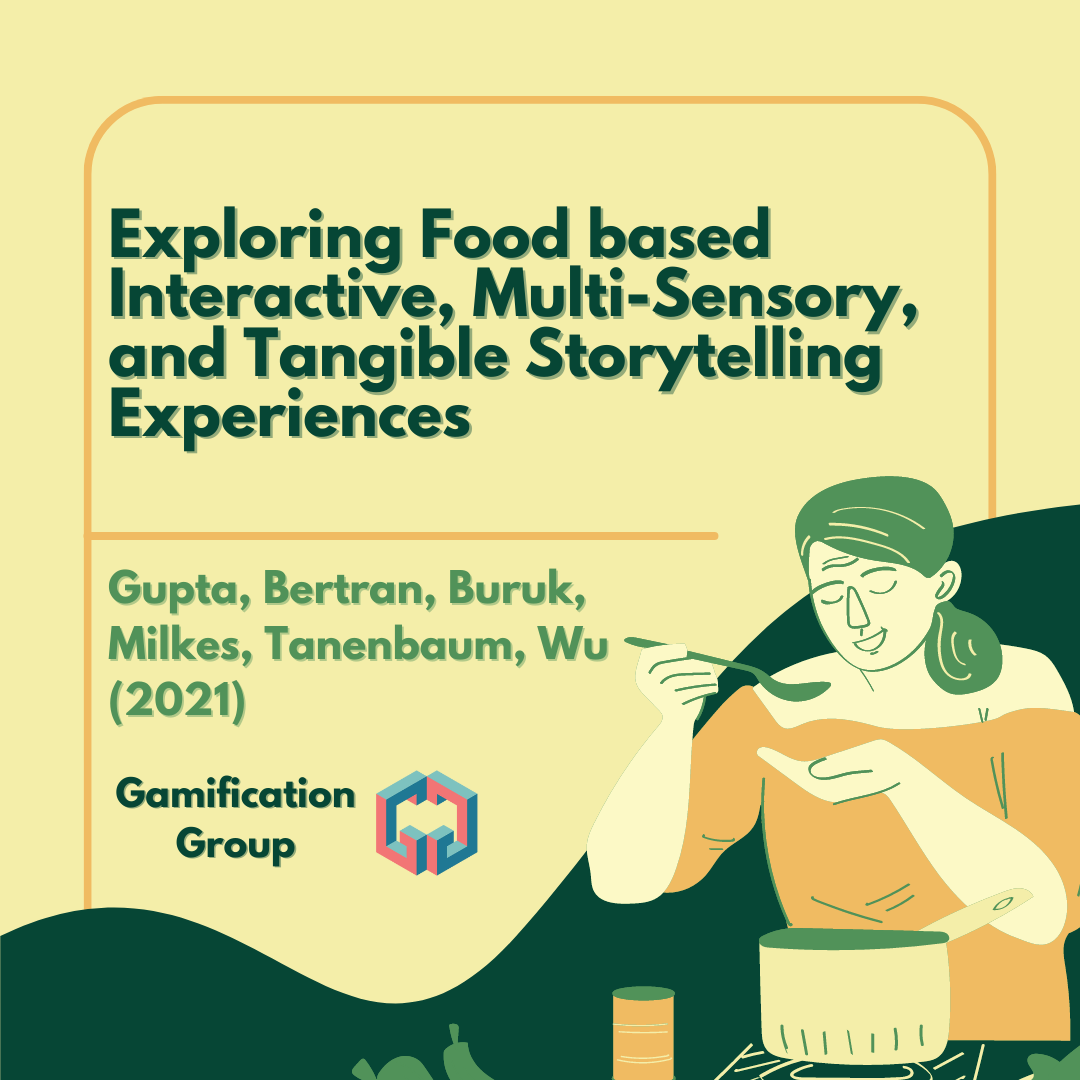
Exploring Food based Interactive, Multi-Sensory, and Tangible Storytelling Experiences
There is a considerable body of work that addresses the design of interactive narratives and food-based interaction systems, but little attention has been paid to the intersection of these two fields. Many approaches in the emerging field of Human Food Interaction (HFI) focus on optimizing dietary habits and often place the user in a passive position. However, the visceral and bodily quality of food consumption argues for interactive multisensory narratives that go beyond the screen and engage our bodies, leading to pleasurable performative experiences. To explore the potential of such interactive systems, a workshop was conducted to ideate novel ways to combine HFI through an interactive narrative.
The workshops explored various aspects such as the experience of food preparation and consumption, emotions related to eating, nostalgia, and other contextual factors. During the workshops, eight prototypes were developed with various themes and settings. The ideas and prototypes were then thematically to present design themes.
Five design themes emerged from the analysis. First, it was recommended that lived experiences with food be used as interactive components in the narrative because food has cultural, visceral, and social attributes. These aspects can help form a meaningful experience. Second, it was suggested that important interactions with food be defined as diegetically significant actions in stories. Actions such as selecting ingredients, plating, preparing, and chewing can be mapped to meaningful actions in the story world, placing players in an active position. Third, the use of food as diegetic characters with life-like characteristics was seen as potentially beneficial. Fourth, engaging the lived diegetic body through food and modifying bodily experiences was found to be an especially scarce approach, noting that the “lived body” aspect of such an approach could help create powerful experiences. Finally, the approach of going beyond food and using food-related objects and the environment as interactive components was considered effective in bringing the story world closer to real eating experiences.
The article concluded by pointing out some limitations and opportunities for future research. It was noted that this study was not conducted in collaboration with professionals such as chefs or interactive storytellers and that a more participatory approach could yield fruitful results in the future.
Gupta, S., Altarriba Altarriba Bertran, F., Buruk, O., Milkes Milkes Espinosa, S., Jean Tanenbaum, T., & Wu, M. (2021, June). Exploring Food based Interactive, Multi-Sensory, and Tangible Storytelling Experiences. In Designing Interactive Systems Conference 2021 (pp. 651-665).
https://doi.org/10.1145/3461778.3462006
Abstract
Much work has been done on the design of both interactive narratives and food-based interaction systems, however their intersection has received little attention within the design research community. We took the relative dearth of food-based interactive storytelling systems as an opportunity to explore a compelling design space for multisensory interactive narratives, given these few systems often position people only as passive observers. We report the results of a design workshop conducted among the authors who are design researchers in interactive narratives and food-based play. In the workshop, we discussed existing works, asynchronously brainstormed new food-based interactive storytelling systems, and then reconvened to discuss our ideas. We present the portfolio of designs that arose from this workshop, and the design themes that we synthesized from the portfolio. We recommend how to position people not just as observers, but as active participants in the interactive food-based storytelling system.




Sorry, the comment form is closed at this time.